A seismic wave front emanates from an energy source like ripples on a pond, but in three dimensions. It is the surface connecting points of equal travel time from the source. In a homogeneous medium, a surface drawn through points of equal travel time is spherical, as depicted in the animation below.

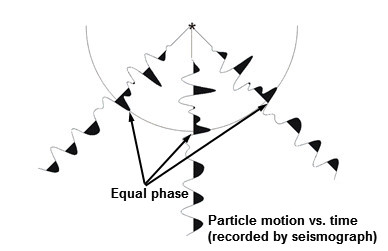
There are four main types of seismic waves, each characterized by its specific particle motion:
- Compressional Waves (“p” waves) are identical to sound waves – the particle motion is parallel to the propagation direction:
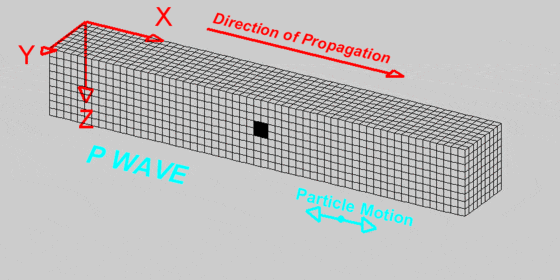
p-wave animation by L.W. Braille, Purdue University.
- Shear Waves (“s” waves) are characterized by particle motion that is perpendicular to the propagation direction:
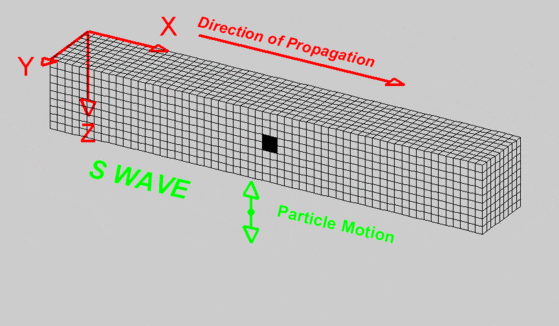
Taken collectively, p- and s-waves are known as “body” waves. The velocities of both can be measured via seismic refraction.
Surface Waves, as the name implies, travel primarily along the ground surface; amplitudes decrease rapidly with depth. There are two types of surface waves. Like body waves, they are characterized by particle motion.- Rayleigh waves are characterized by elliptical motion perpendicular to the surface:
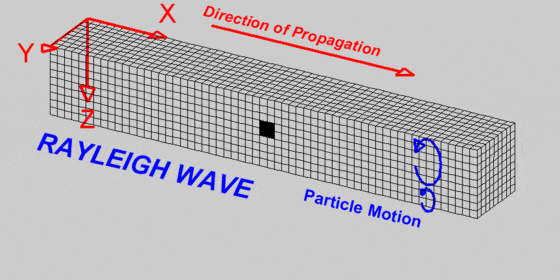
In the near surface, this motion is “retrograde”, meaning that it is counter-clockwise when the propagation is left-to-right. At depth, the motion can reverse to prograde.
- Love Waves are created when particles vibrate perpendicular to the propagation direction:
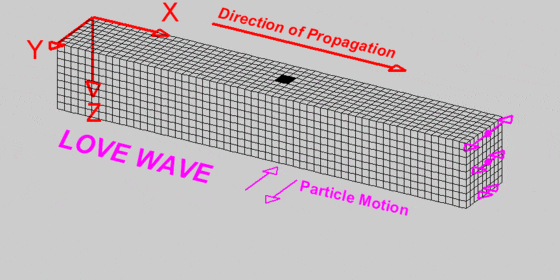
While the particle motion is similar to that of shear waves, Love wave amplitude is much higher and decreases rapidly with depth. Love waves are the most destructive waves in earthquakes because of their high amplitude and transverse particle motion.
While the various wave types shown above have been isolated for illustration purposes, all are present to some degree whenever seismic energy is traveling through a solid medium. Hence actual particle motion is extremely complex.
